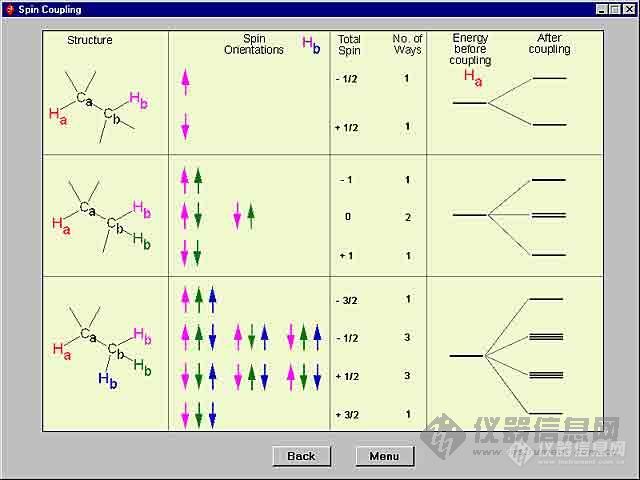-
+关注
私聊
-

第17楼2005/05/10
spin coupling in NMR:
Coupling Constants:
The distance between peaks in a multiplet is called the coupling constant, J. For the peaks of chloroethane, the coupling constant J is 7.2 Hz. This is calculated in the following way: take the distance (in ppm) between any two adjacent split peaks. In our example, the triplet centered at 1.14 ppm was used. The leftmost peak resonates at 1.26 ppm. The center peak resonates at 1.14 ppm. The difference between the two is 0.12 ppm. This spectrum was obtained on a 60 MHz machine. Therefore, there are 60 Hz for every 1 ppm on the spectrum. Multiplying 0.12 ppm by 60 Hz/1 ppm gives the 7.2 Hz value.
distance between split peaks = 1.26 ppm - 1.14 ppm = 0.12 ppm
J = 0.12 ppm * (60 Hz / 1 ppm) = 7.2 Hz
Peaks for protons that split each other will always have the same coupling constant. This is useful in determining which peaks are related to each other in terms of adjacency. One final note about peak splitting: multiplets will often be skewed in the direction of the peak to which they are coupled.